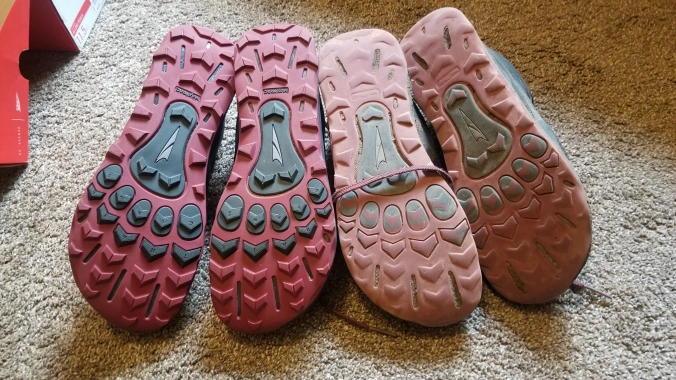Note: For an index of all articles in all three Favorite Songs series, click here, then scroll down.
Who They Are: Eagles are one of only two artists (Michael Jackson being the other) in history to have produced two albums that have sold more than 40 million copies, so I think it’s safe to presume that if you’re the least bit musically sentient, then you know who they are, and what their music sounds like. (You might not know that their name contains no “The” in front of it, and I’m hewing to that throughout this article, even though it probably reads weird).
The group were founded in 1971 by Don Henley, Glenn Frey, Bernie Leadon and Randy Meisner, who were working together as Linda Ronstadt’s backing band as she toured her largely-maligned Silk Purse album. While Henley and Frey emerged as the driving songwriting, singing, and directing duo over the years that followed, Meisner and Leadon actually came into the group with deeper bona fides, the former having been bassist for Ricky Nelson’s Stone Canyon band, the latter having played on two albums with the Flying Burrito Brothers, featuring the legendary Gram Parsons and ex-Byrd Chris Hillman. The original quartet issued two albums, 1972’s Eagles and 1973’s Desperado before adding lead guitarist Don Felder for their third album (On The Border) in 1974. Leadon left following 1975’s One of These Nights, replaced by ex-James Gang/Barnstorm string bender Joe Walsh (a successful solo artist in his own right) for 1976’s monumental Hotel California. Leadon’s era was capped by the release of Their Greatest Hits (1971-1975), which was even more monumental in terms of its sales record, handily the highest selling compilation album ever. Meisner was pushed out before 1979’s The Long Run, replaced by ex-Poco bassist Timothy B. Schmit; that spotty album was a significant critical and commercial backward step after the juggernauts that preceded it (i.e. only seven times platinum, not 20+), and the group split in 1980.
Following a 14-year break, The Long Run band reassembled to tour to great commercial acclaim, if not the best critical regards. Felder was forced out in 2001, before the group’s final studio release, 2007’s Long Road Out of Eden. Glenn Frey died in 2016, but the group soldiered on as a high-grossing concert act, with Vince Gill and Frey’s son Deacon (plus a slew of extra supporting hands) joining the core trio of Henley, Walsh and Schmit. While their music is much-loved and sells by the boatloads, and their type of country-rock is much-prasied when played by others, there’s a massive air of negativity around Eagles in critical and analytical circuits, with the group being blamed for (among other things) the blight of California soft/yacht rock, the fundamental role in rock of cocaine in the go-go ’70s, and the bloat of concert-ticket prices. There’s a wonderful documentary about the group from 2013 called History of the Eagles, which is riveting in revealing the true dysfunction in and around the group, and in clearly demonstrating that Don Henley and Glenn Frey are/were kind of awful people, especially cruel to Meisner, Leadon and Felder, and mercenary in recruiting affable go-with-the-flow types like Walsh and Schmit, who left their dictatorial leadership tendencies largely unchallenged.
When I First Heard Them: Summer of 1972, when their debut single “Take It Easy” raced up the American Top 40 charts, to be followed in rapid succession by the seemingly non-stop flow of hits that were eventually compiled for Their Greatest Hits (1971-1975), which was the first of their albums that I purchased. I then eagerly nabbed Hotel California upon its release, and quite loved it in its time. Like most fans, I then waited too long for The Long Run, which paled in comparison to its predecessors, and made their subsequent break-up seem not particularly painful, and somehow apt and expected. I never really re-engaged with them following their 1994 reunion, and have never seen them in concert. I have, however, made the pilgrimage to Winslow, Arizona, to stand on the corner made famous by Frey and Jackson Browne in the first Eagles hit, “Take It Easy:”
Why I Love Them: In looking at the 80+ articles that I’ve written thus far in this three-part series, I’d say that Eagles sit somewhat unusually in that I love much of the music they made over the first five years or so, but I have something of an active aversion to some of the people who made it, primarily Henley and Frey. But, fortunately I suppose, that aversion has never quite risen to the point where I can’t listen to their music together as Eagles, unlike, say, their fellow ultra-uber-mega-star Michael Jackson, whose music I just can’t spin anymore, ever. As was the case in my prior article about INXS, I feel strongly that Eagles generated a mostly-unfair critical backlash over the years that’s not about the quality of the music, but rather about the changing times in which the music was made: Eagles hit their commercial peak as punk was emerging, so they became emblematic of all that punk rebelled against, while INXS fared similarly with the advent of grunge.
In Eagles’ case, the opprobrium seems especially jarring given the love and adulation steered toward Gram Parsons and other pioneers of his ilk forging the American country-rock idiom, which is just as historically meaningful and significant in this country as the folk-rock being crafted in England at the time by the likes of Fairport Convention. I think, at bottom line, that Eagles were simply damned by their own success, while Parsons has been over-lionized due to his short and tragic life, as often happens, and other country-rock flavored obscurities from the era are trotted out to display critics’ cultural cool and cache for knowing about stuff that nobody else did, or does. My favorite Eagles album is easily 1973’s Desperado, the most countryfied of the original group’s output, and the one most usually deemed as the weak link among the critical crowd. Oh well. I like what I like, and in the case of Eagles, that means that all but one of the songs in my Top Ten list below come from those first four albums, when they were making great, original, visionary work, that people actually wanted to buy and hear. Fancy that!
#10. “Life in the Fast Lane,” from Hotel California (1976)
#9. “Tequila Sunrise,” from Desperado (1973)
#8. “Peaceful Easy Feeling,” from Eagles (1972)
#7. “Desperado,” from Desperado (1973)
#6. “Take It to the Limit,” from One of These Nights (1975)
#5. “Bitter Creek,” from Desperado (1973)
#4. “One of the These Nights,” from One of These Nights (1975)
#3. “Already Gone,” from On the Border (1974)
#2. “Take It Easy,” from Eagles (1972)
#1. “Certain Kind of Fool,” from Desperado (1973)

















